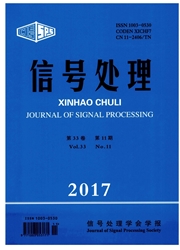

 中文摘要:
中文摘要:
This paper studies an interference coordination method by means of spectrum allocation in Long-Term Evolution (LTE) multi-cell scenario that comprises of macrocells and femtocells. The purpose is to maximize the total throughput of femtocells while ensuring the Signal-to-Interference plus Noise Ratio (SINR) of the edge macro mobile stations (mMSs) and the edge femtocell Mobile Stations (fMSs). A new spectrum allocation algorithm based on graph theory is proposed to reduce the interference. Firstly, the ratio of Resource Blocks (RBs) that mMSs occupy is obtained by genetic algorithm. Then, after considering the impact of the macro Base Stations (mBSs) and small scale fading to the fMS on different RBs, multi-interference graphs are established and the spectrum is allocated dynamically. The simulation results show that the proposed algorithm can meet the Quality of Service (QoS) requirements of the mMSs. It can strike a balance between the edge fMSs’ throughput and the whole fMSs’ throughput.
 英文摘要:
英文摘要:
This paper studies an interference coordination method by means of spectrum allocation in Long-Term Evolution (LTE) multi-cell scenario that comprises of macrocells and femtocells. The purpose is to maximize the total throughput of femtocells while ensuring the Signal-to-Interference plus Noise Ratio (SINR) of the edge macro mobile stations (mMSs) and the edge femtocell Mobile Stations (fMSs). A new spectrum allocation algorithm based on graph theory is proposed to reduce the inter- ference. Firstly, the ratio of Resource Blocks (RBs) that mMSs occupy is obtained by genetic algorithm Then, after considering the impact of the macro Base Stations (mBSs) and small scale fading to the fMS on different RBs, multi-interference graphs are established and the spectrum is allocated dy- namically. The simulation results show that the proposed algorithm can meet the Quality of Service (QoS) requirements of the mMSs. It can strike a balance between the edge fMSs' throughput and the whole fMSs' throughput.
 同期刊论文项目
同期刊论文项目
 同项目期刊论文
同项目期刊论文
 Interference Coordination Method Spectrum Allocation Based on Graph Theory In Two-tier Cellular Netw
Interference Coordination Method Spectrum Allocation Based on Graph Theory In Two-tier Cellular Netw Radio Resource Management Scheme for Heterogeneous Wireless Networks based on Access Proportion Opti
Radio Resource Management Scheme for Heterogeneous Wireless Networks based on Access Proportion Opti A new algorithm of spectrum allocation based on the balance between supply and demand in cognitive r
A new algorithm of spectrum allocation based on the balance between supply and demand in cognitive r Joint Optimization Methodsfor Non-convex Resource Allocation Problems of Decode-and-Forward Relay Ba
Joint Optimization Methodsfor Non-convex Resource Allocation Problems of Decode-and-Forward Relay Ba Joint Optimization Scheme for Power Allocation and Subcarrier Pairing inOFDM-Based Multi-Relay Netwo
Joint Optimization Scheme for Power Allocation and Subcarrier Pairing inOFDM-Based Multi-Relay Netwo Performance Analysis of the Primary User in theSecondary User Relay Assisted Spectrum Sharing Networ
Performance Analysis of the Primary User in theSecondary User Relay Assisted Spectrum Sharing Networ Resource Allocation for Decode-and-Forward Relaying Assisted Multi-cell Orthogonal Frequency Divisio
Resource Allocation for Decode-and-Forward Relaying Assisted Multi-cell Orthogonal Frequency Divisio A Joint Resource Allocation Scheme for Relay Enhanced Multi-cell Orthogonal Frequency Division Multi
A Joint Resource Allocation Scheme for Relay Enhanced Multi-cell Orthogonal Frequency Division Multi Cooperative modulation recognition method based on multi-type feature parameters and improved DS evi
Cooperative modulation recognition method based on multi-type feature parameters and improved DS evi An Adaptive BandwidthAllocation Strategy for Multiuser Multi-access Video Communication over Heterog
An Adaptive BandwidthAllocation Strategy for Multiuser Multi-access Video Communication over Heterog Joint Optimization Scheme for Power Allocation and Subcarrier Pairing in OFDM-Based Multi-Relay Netw
Joint Optimization Scheme for Power Allocation and Subcarrier Pairing in OFDM-Based Multi-Relay Netw Joint energy-efficient powerallocation and subcarrier pairing in orthogonal frequency divisionmultip
Joint energy-efficient powerallocation and subcarrier pairing in orthogonal frequency divisionmultip An Energy-Aware Routing Protocol for Mobile Ad Hoc Networks Based on Route Energy Comprehensive Inde
An Energy-Aware Routing Protocol for Mobile Ad Hoc Networks Based on Route Energy Comprehensive Inde 期刊信息
期刊信息
